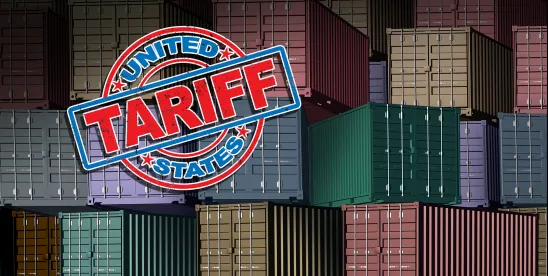These “frequently asked questions” explain tariffs at a basic level, the Administration’s recently-announced new tariffs, its announced a 90-day “pause” on certain of the new tariffs, and how the new tariffs will impact U.S. companies.
We start with the basics below, then address what we currently believe is happening and what the near-term future is likely to hold.
Tariff Basics
What are Tariffs?
Tariffs are taxes on goods imported into a country from another country, the way that cars on a highway might pay a toll. Countries can vary these taxes depending on what country they come from, and what kinds of products they are.
Who Pays the Tariffs?
Tariffs are not paid by the “target” country, i.e., the country from which the products derive, nor by the manufacturer in that country. Rather, they are typically paid by the distributor that transports the goods from the original country into the country that set and imposed the tariff, in this case the U.S. The distributor, of course, normally can be expected to pass the additional cost onto the purchaser.
What Is the Primary Impact of Tariffs?
Tariffs can generate revenue for the country imposing the tariff, but they can also result in decreased demand for imported products due to the increased prices, and corresponding increased demand for products produced domestically, or produced by a third country that is subject to lower tariffs.
Increases in tariff rates can also result in reciprocal countries raising their own tariffs in response, making goods produced in the U.S. more expensive, and less desirable, in the “target” country.
Why Do Governments Impose Tariffs?
Tariffs can play a role in protecting a local industry if businesses in other countries are able to operate at a lower cost, such as if wages are much lower in the other country. They can also play a role in enforcing national policy. For example, the Administration has stated that its current tariff changes with respect to certain countries are designed to encourage those countries to make a greater effort to prevent the importation of illegal drugs.
Has the U.S. Had Tariffs In the Past ?
Yes, Tariffs have been around for a very long time. The United States has had tariffs in place, despite a general policy of free trade since World War II. The tariffs are a hodge-podge of government policy, legislative mandates, and trade agreements with other countries.
Countries around the world have had disputes over relative tariffs, including claims that a country may be violating whatever treaty or other rule governs the trade relationship between the countries. Since 1995, these disputes have been adjudicated by the World Trade Organization, or WTO.
The New U.S. Tariffs
What Tariffs Has the Administration Recently Announced ?
On April 2, 2025, the Administration announced an across-the-board “base” 10% tariff on imported goods from most countries, with even materially higher tariffs imposed many of them, although as noted below the Administration has since announced a 90-day suspension of the “higher” tariffs, i.e., those beyond the 10% base rate. The countries subject to the higher tariffs are listed in Annex I to the Administrations announcement available at the following link.
There are exceptions under the new tariffs for certain products, including energy products like oil, copper, pharmaceuticals, semiconductors, and lumber, all of which may become subject to separate tariffs. The Administration is already making public statements about ending the exemption for pharmaceuticals.
Canada and Mexico were not included in the April 2 announcement because corresponding tariffs have subject to negotiations on separate tracks. China was included in the April 2 announcement, but also appears to be on a separate track, and the Administration very recently substantially further increased tariffs on Chinese goods in what appears to be, at least for the time being, a trade war with that country. On April 9th, the Administration announced a 90-day suspension of additional tariffs beyond the “base” 10% tariff applicable to all countries identified in the announcement on April 2, with the exception of China, with respect to which it actually further increased tariffs.
What did the 90-day Suspension Include ?
According to the Administration, they have decided on a 90-day suspension of additional tariffs beyond the “base” 10% tariff applicable to the numerous countries identified in Annex II to the announcement on April 2nd. As noted above, the announcement on April 2 imposed a “base” tariff of 10% on all affected countries, but most countries were slated to be subject to even higher tariff rates.
Are The Tariff Rates Expected to Change Over the 90-day Period?
The White House expressly worded its most recent announcement as the opening bid in a negotiation, and it recently announced a limited 90-day pause citing how many countries are negotiating without imposing retaliatory tariffs of their own. Accordingly, the tariffs are expected to change for many countries on a case-by-case basis, but the timeframe for such changes is unclear, and the results of negotiations will likely be publicly-announced in a staggered fashion.
How The New U.S. Tariffs Impact Companies
What will be the impact on companies that do business in the U.S.?
Some companies will not be materially impacted because they do not use a material number of imported goods, do not sell goods abroad as a material part of their business, or have practical alternative sources for goods or markets in which to sell their products.
Many companies, however, will be materially impacted, given the broad scope of countries impacted by the new tariffs, and the likelihood that other countries will in due course adopt retaliatory tariff increases. In the medium and long term, the impact will depend on the results of the negotiations that are ongoing. In the short term, the greatest impact may result from uncertainty about what will happen in the future.
What about publicly-reporting companies?
Companies that are publicly-reporting in the U.S. will be under some pressure to provide information at their quarterly earnings conferences about the impact of the tariffs on their business. If companies have earnings guidance for their 2025 fiscal years, they will have to address whether and how the tariffs impact the guidance.
In addition, the MD&A section of a quarterly report on Form 10-Q must address known uncertainties that are reasonably likely to have a material impact on results of operations. The current uncertainty about ultimate tariff rates set by the U.S., and about potential retaliatory tariffs imposed by other countries, will make this a complex exercise for many public companies. One option is to address multiple scenarios based on varying assumptions.



 />i
/>i

